Bon appétit Ishikawa!/Wagyu Beef
sistibly rich taste, never experienced before. Noto beef is steadily progressing to become the superior Japanese beef. 2
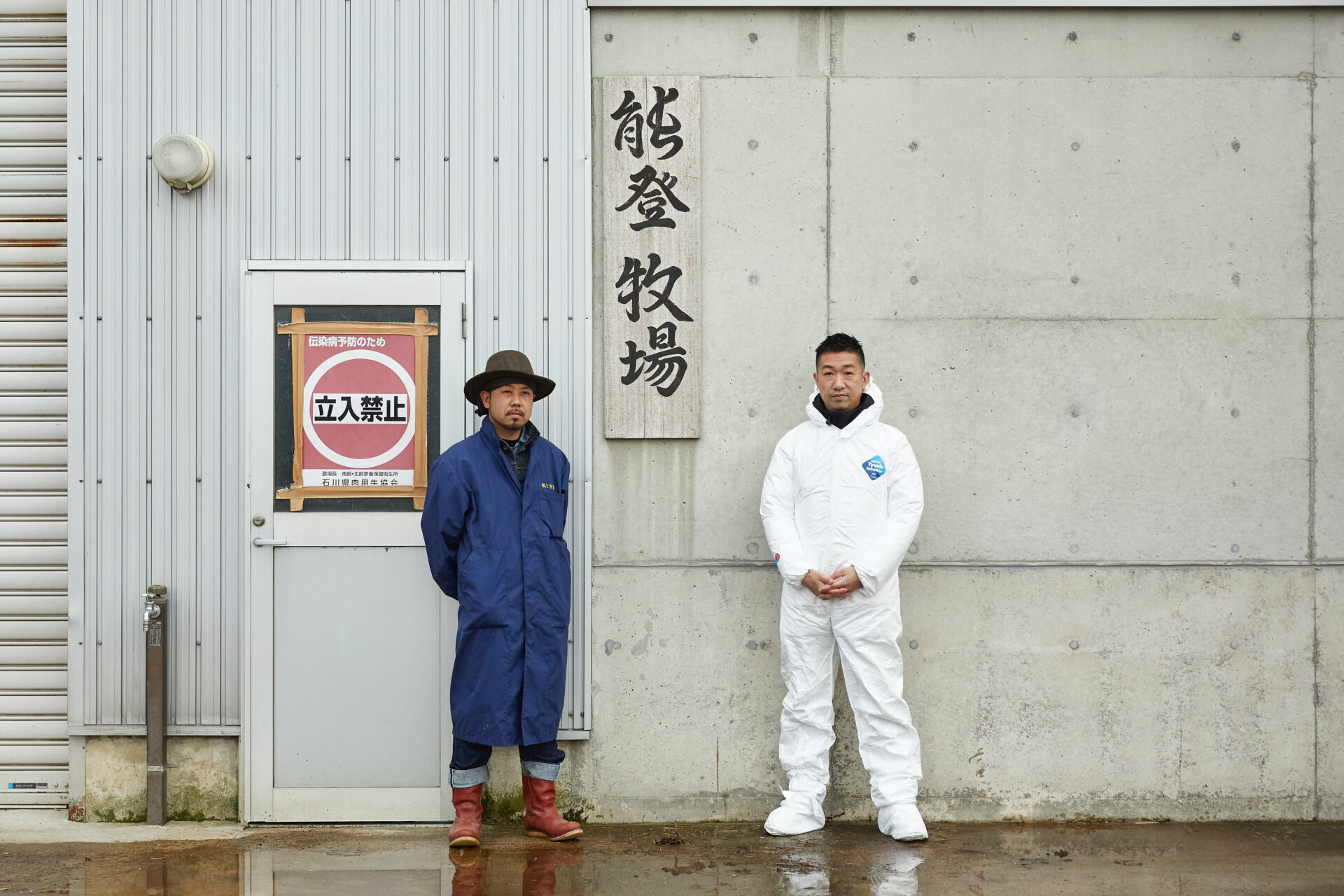
Noto beef boasts Hyogo beef’s fine taste and Tottori beef’s physical size.
The accreditation system of Ishikawa’s beef brand, Noto beef, was established by the Noto Beef Branding Promotion Association in 1995. Noto beef is a rather new brand among Japanese beef brands; however, its roots date back to the Meiji Period. The development of the salt industry along the western coast of Noto Peninsula, facing the Sea of Japan, lead to a large demand for firewood, and draft cattle were bred to carry it. Breeding cattle were brought from Tajima District of Hyogo Prefecture in the Meiji Period and from Tottori Prefecture in the Taisho Period and crossbred to produce cattle with strong legs, in particular forelegs, that were suited to farming. New breeding cattle were brought regularly every year, and in the early Showa Period the breeding of the first filial generation of Japanese beef combining Hyogo beef’s quality marbling and Tottori beef’s large physical size was promoted. The hybrid cattle were superior in both marbling and size. As crossbreeding continued, the size became smaller and marbling decreased; however, the quality of the meat was retained. The red meat, which contains less marbling compared to other Japanese beef brands, has become a favored characteristic of Noto beef, increasing its popularity.
Teraoka Livestock Group in Shika Town, located in the central area along the western coast of Noto Peninsula, specializes in Noto beef. It runs butchers, wholesale shops and restaurants that provide a wide selection of Noto beef products. Their first shop, Teraoka Butcher, opened in 1904 and developed along with the progress of Noto beef. We interviewed President Saiji Teraoka.
Mr. Teraoka: “My grandfather used to be engaged in the transport business, but then he suddenly opened a butcher specializing in beef in the Meiji Period. In those days beef was eaten in large cities, so it was a pioneering business around here. The standards of Noto beef were established in 1995; however, before then we had already been expanding market channels and breeding Noto beef to convey the deliciousness of locally-bred Japanese beef. Noto beef has increased in name recognition, but the sales volume is still small and outside the prefecture it is sometimes called a phantom Japanese beef brand.”
Noto beef’s most attractive point is its melting feeling in the mouth, due to the low melting temperature of its fat. Mr. Teraoka highly values its moderate marbling that does not linger in the mouth, as well as the quality and aroma of its red meat.
Mr. Teraoka: “No other beef is as gentle on the mouth and stomach as this. However, of course anyone will struggle to eat 200g of A5-ranked sirloin steak. In short, it is important to cut and cook the meat in an adequate manner, suited to the cut of meat and its marbling condition. We think meat sellers should be responsible for informing people about this fact, and we are also holding cooking classes using Noto beef. If you get the knack, you can cook meat surprisingly well even with household cookware. Beef bowls (beef on rice) become surprisingly tasty if you use Noto beef. If all meat cuts are sold at a reasonable price without waste, farmers can spend money to produce tastier meat. It’s important to create such a virtuous circle.”
Finally, we asked him to recommend his favorite way to eat Noto beef; we wanted to know how a Noto beef expert enjoys it.
“Me? Definitely as sashimi (raw). I eat it simply with soy sauce or salt. Noto beef thigh meat sashimi is a delicacy. If you use seasoning that you usually use when grilling it, you will easily recognize the difference,” said Mr. Teraoka with a smile.
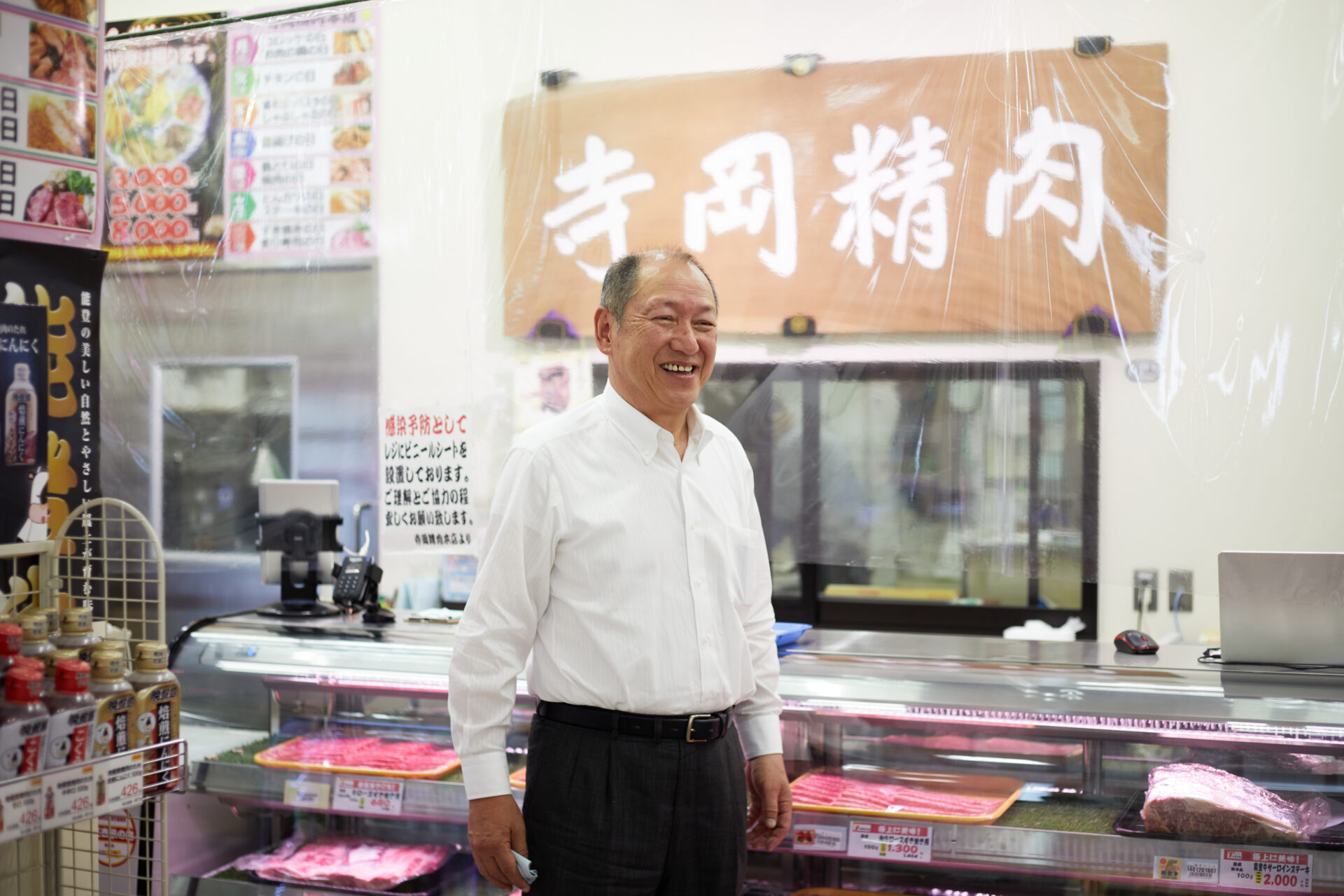
The cattle’s relaxed appearance is telling of their stress-free environment.
Noto Town is located in the northeastern region of Noto Peninsula. When you start from the coast facing the Sea of Japan and climb the hill, you will see a spacious pasture in the virgin woods, away from the villages. This is the Noto beef producer Noto Ranch & Co., Ltd. It is a rather new company, established in 2014; however, it has been grand champion of the Ishikawa and Fukui Beef Competition for five consecutive years. In the competition, dozens of head of cattle are presented from Ishikawa and Fukui; their meat judged for weight, marbling condition, luster and other qualities. The Governor’s Prize is awarded to the best entrant from each prefecture, and one of these is selected as the grand champion.
The award is proof that Noto Ranch produces the best Noto beef. Executive Director, Masaru Hirabayashi, showed us around the cattle barns.
Noto Ranch & Co., Ltd. are now raising about 1,100 head of cattle in four barns. The fourth barn was completed at the end of March 2020. He says that they need to be careful not to stress the cattle and always remember that they are intruding into the cattle’s living space. Mr. Hirabayashi: “A maximum of four head of cattle are raised in an area of 32m2. The standard recommended by the Ministry of Agriculture, Forestry and Fishery is 6m2 per head, so our spaces are larger. We are always careful not to talk in a loud voice, not to touch the cattle unless necessary, and not to run in the barn. This is to avoid stimulating the cattle. We even try to avoid entering the barns as much as possible. Some cattle might like humans, but others might not and might become stressed simply by seeing a human.
The ONESTORY food curator, Hayato Miyauchi, noticed a calm atmosphere in the barns. He has seen many pastures before, and he points out that such an odorless, clean and quiet atmosphere is very rare, and that all the cattle here have a gentle look. Mr. Hirabayashi: “I’m glad to hear that. As you’ve said, cattle raised in poor conditions look grim. Most of our cattle look innocent and absent-minded, in a sense, but I think it’s because they are relaxed.”
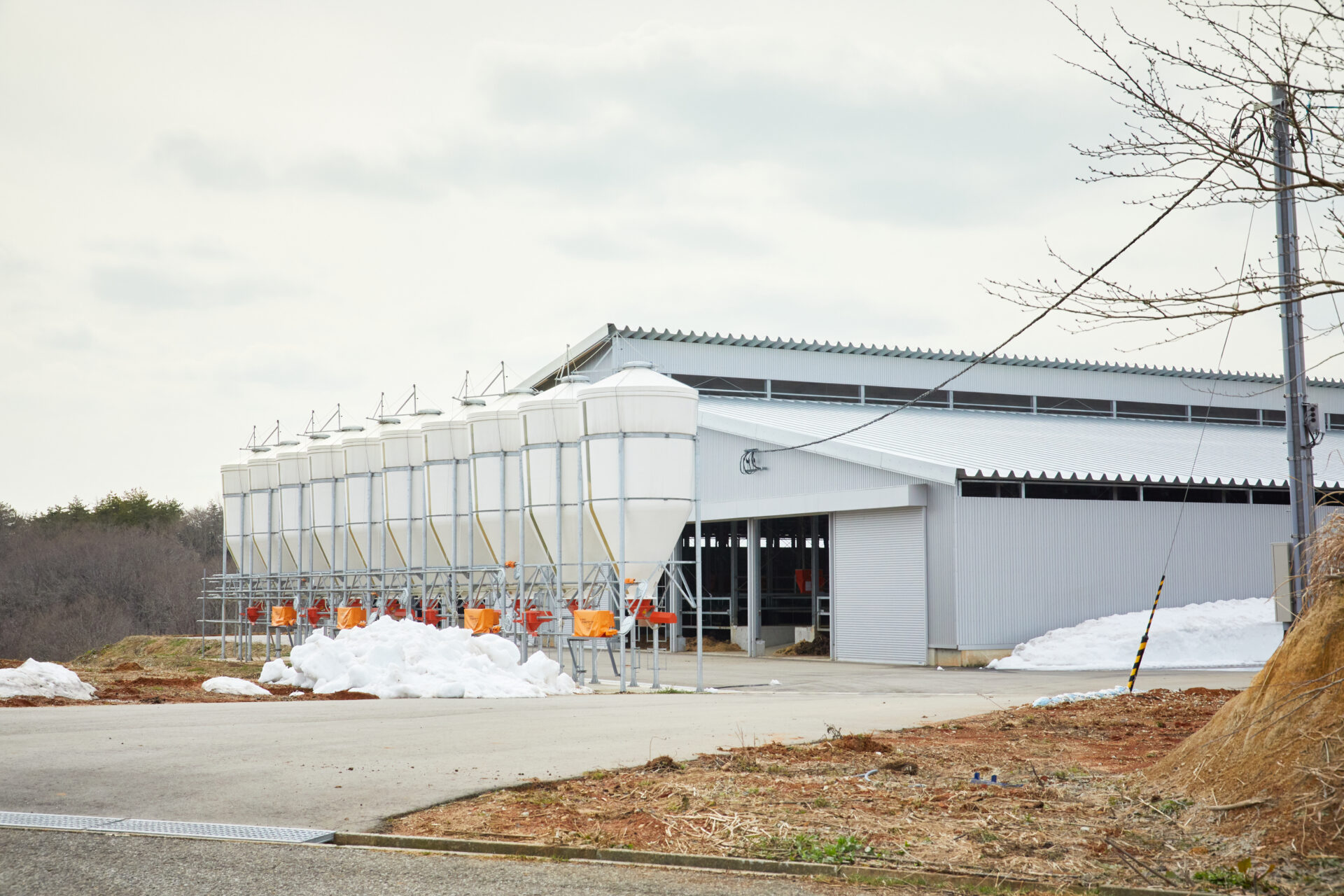
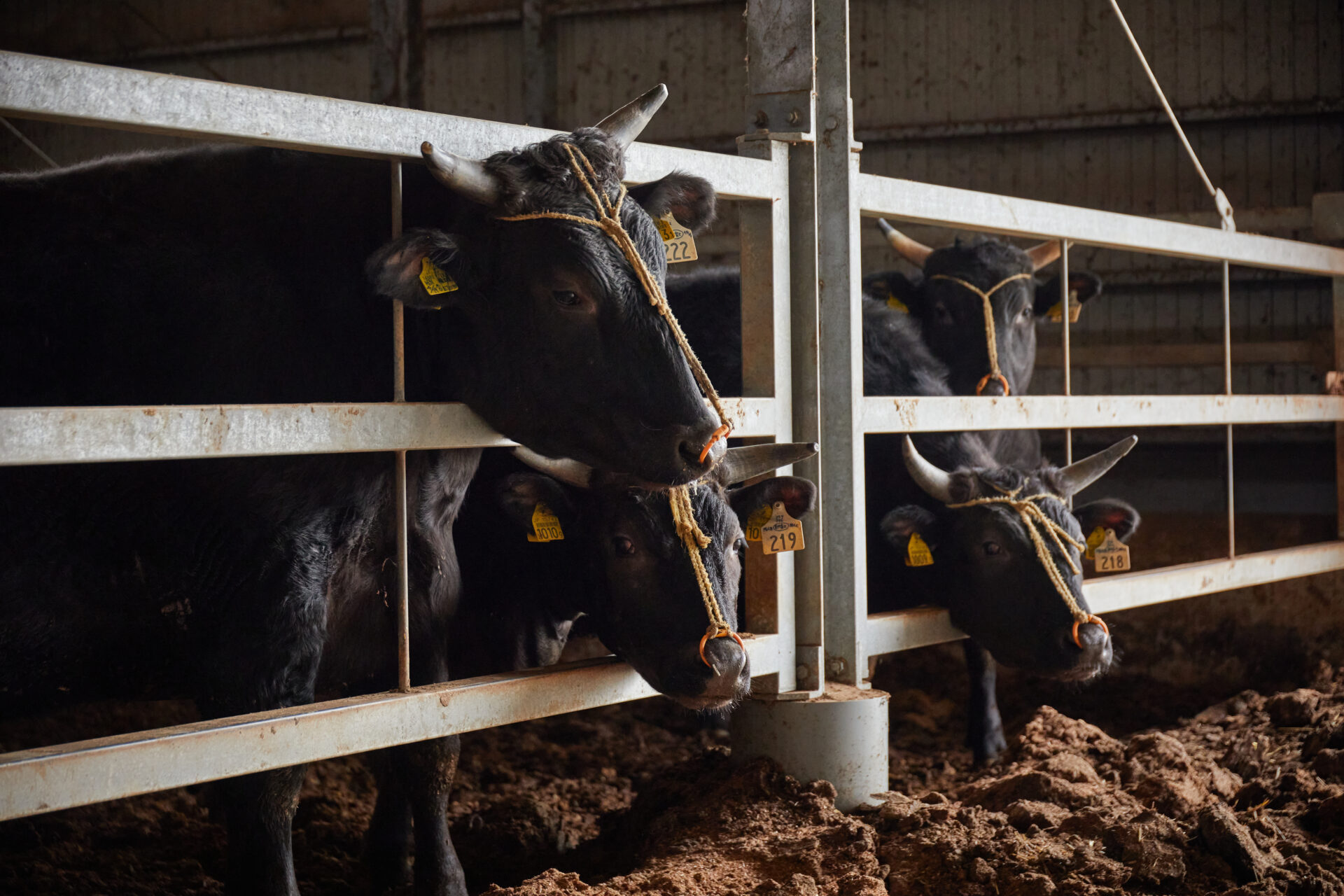
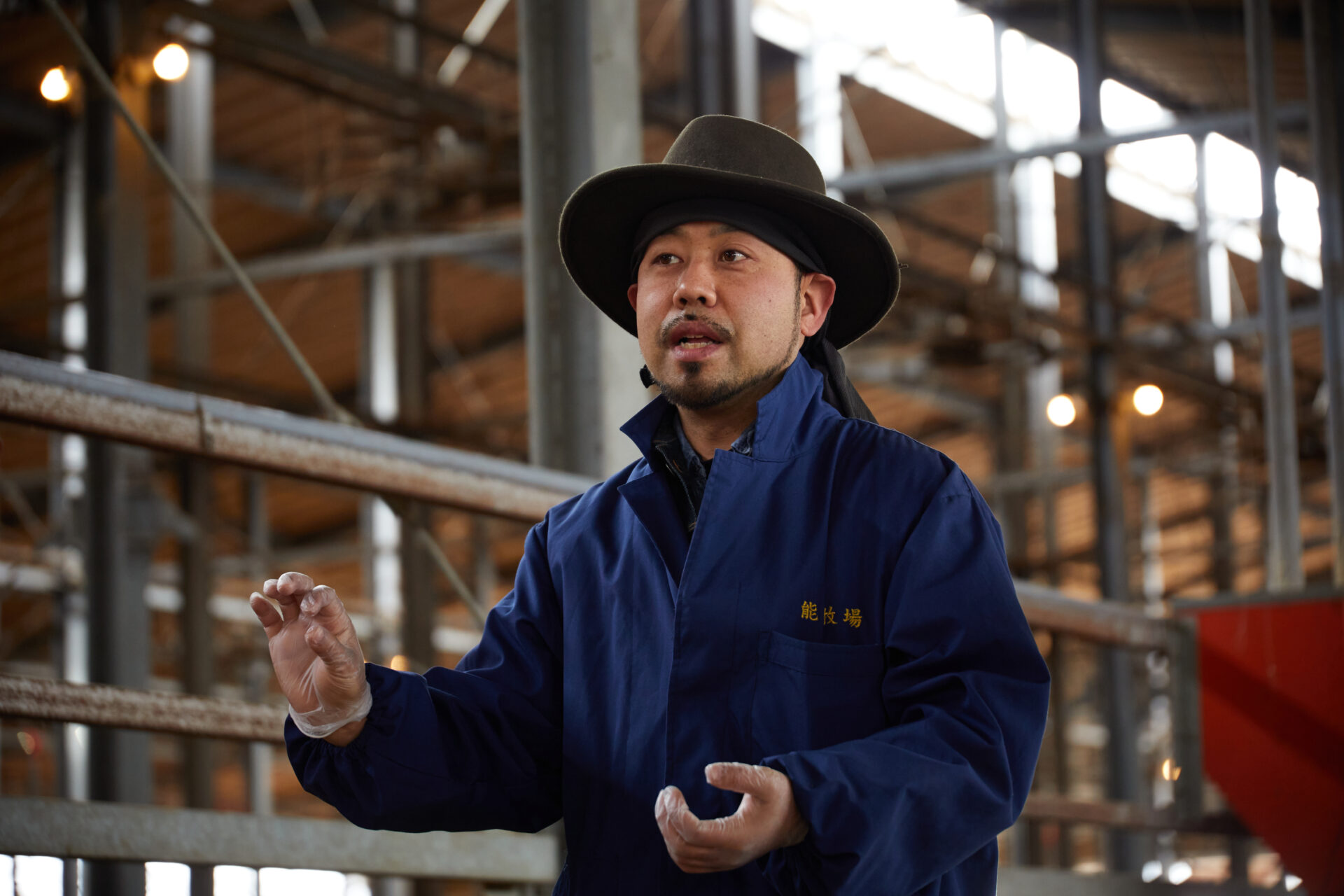
Their original raising method differs to the Australian and American methods. It is specifically aimed at improving the beef’s taste.
Mr. Hirabayashi was born into a family that runs a famous Japanese black cattle farm in Gunma Prefecture: Akagi Livestock Company. It is a group company of Noto Ranch & Co., Ltd., without a capital relationship. Mr. Hirabayashi learnt the basics of cattle raising in Akagi Livestock Company, while working in accounting, and participated in the establishment of Noto Ranch. “I was unemployed before working for Akagi Livestock Company. I majored in accounting at a graduate school, studying to acquire a license after graduation. I failed the exam for several consecutive years and I was told to stop taking exams and start working,” he said bashfully. Perhaps due to his academic background, he answered our questions logically and clearly. He taught us about oleic acid in an easy-to-understand way.
Mr. Hirabayashi: “High oleic acid content does not necessarily mean good taste. Oleic acid, a type of fatty acid, lowers the fat melting point, leading to a good texture. Although texture is an important factor, the taste is not influenced. Taste is mainly improved by other types of fatty acids as well as amino acid, which increases umami taste. Therefore, it is necessary to increase not only oleic acid but also the other content that improves taste.”
A meat’s taste is influenced by feed composition. There are two types of feed for cattle: grass and crops such as corn and barley. Simply speaking, the former consists of fiber and the latter consists of carbohydrates. That’s why the meat of Australian cattle, which are fed on grass, has a high red meat content and is fibrous and tough. On the other hand, the meat of American cattle, fed on crops containing some fat, is tough with a high red meat content, but also has a moderate amount of fat.
Mr. Hirabayashi: “The Japanese raising method not only attempts to increase fat, but also to create marbling. It is a hybrid method; we first feed them grass to strengthen the digestive organs and then feed them crops. The good condition of the digestive organs increases the effects of the crops. We add raw rice bran in order to increase oleic acid content, and are devising various other ways to improve taste, although they are secrets and I cannot tell you about them.”
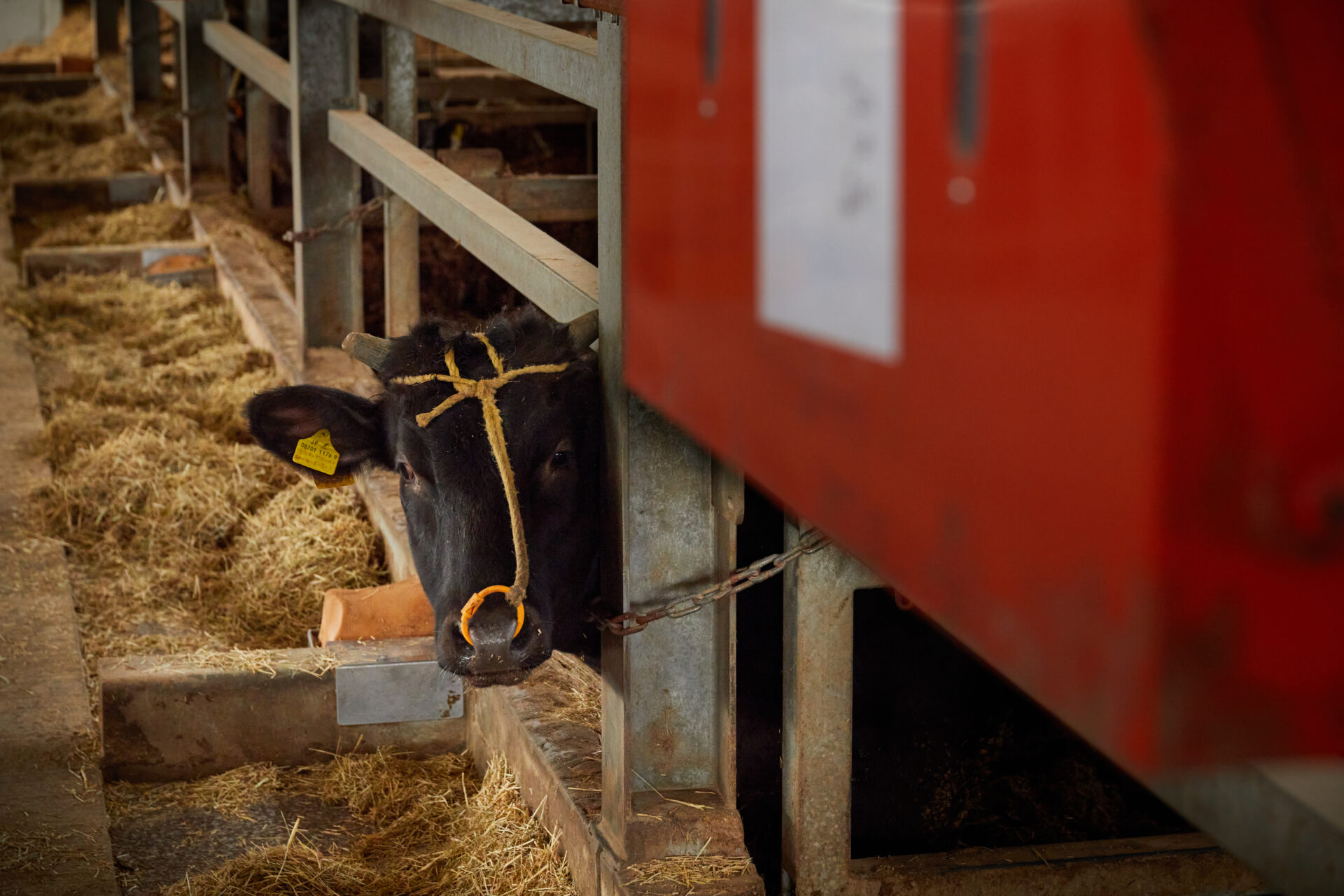

Challenging the contradiction between oleic acid content and beef rating to move forward and convey Noto beef’s great taste
Oleic acid is not always a merit in the beef business; it can also be a demerit. The beef rating decreases as oleic acid content increases; there is a trade-off between oleic acid and rating. Mr. Teraoka of Teraoka Livestock Group also referred to this.
Mr. Teraoka: “Rating is carried out right after butchering; however, Noto beef requires a few days of refrigeration to show clear marbling, since its fat melting point is very low. Therefore, its BMS (beef marbling score) tends to be rated low. Clear marbling often appears after being refrigerated post-rating. We call this phenomenon ‘meat transformation’. Noto beef transforms.”
Mr. Hirabayashi says that Noto beef’s low fat melting point can be a disadvantage in sales as well. Mr. Hirabayashi: “When the oleic acid content is high, the fat melts easily and the taste becomes better. However, easily-melting fat is disadvantageous for appearance in many cases. For example, in the meat section of a supermarket the lighting is usually adjusted to make red meat look natural. Under such conditions, the easily- melting fat of Noto beef causes its color to become dull, which might give the impression to some customers that the meat is not fresh. This is the reason why Noto beef may be rated low, although it has nothing to do with the meat quality.”
Noto Ranch & Co., Ltd. is currently researching how to make the fat look white and clear while retaining a high oleic acid content, in order to solve the problem of the trade-off between oleic acid content and rating. In addition, they are also trialing 30-month raising, which is longer than the average of 28 months. So why are they taking such trouble, even though the cattle do not grow any larger?
“We know through experience that fat becomes much tastier after 30 to 33 months of raising, although there is no scientific proof, yet. We would like to verify this and take on the challenge of 1,000-day raising. Generally, females are said to be tastier than males, so we would like to start with females and inform the world about Noto beef’s irresistible taste. Tasty meat is more eloquent than anything else. We would like to raise Noto beef’s recognition through its unbeatable taste.”
Efforts to improve Japanese beef’s quality require a tremendous amount of time and labor. However, they are progressing as steadily and powerfully as the steps of cattle.
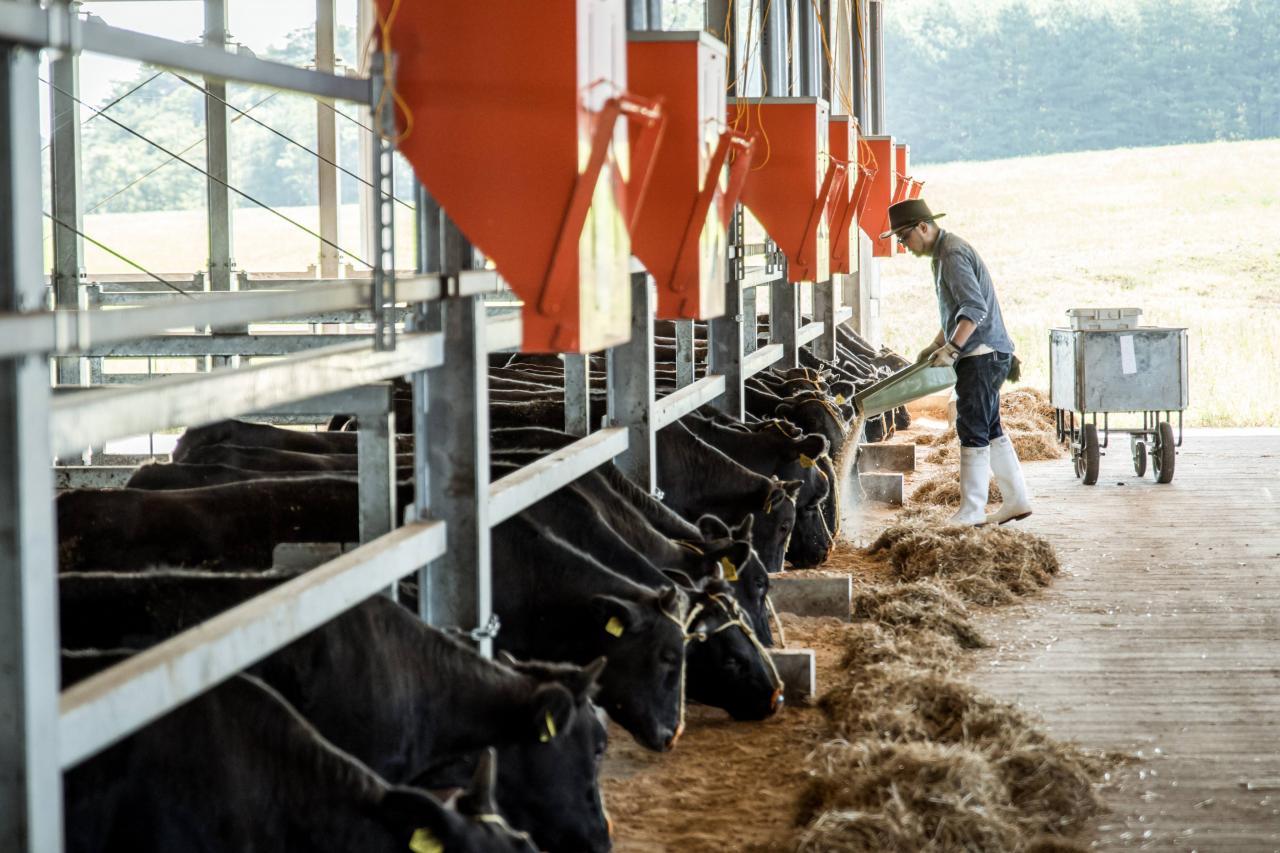

Photographs:SHINJO ARAI
Text:KOH WATANABE
(supported by Ishikawa Prefecture)